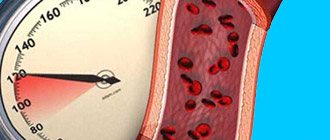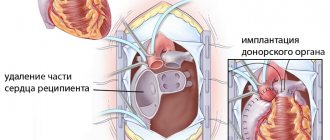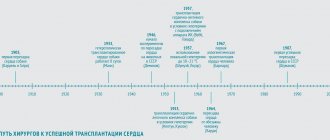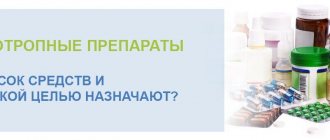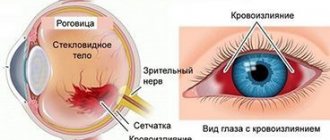Nootropics are neurometabolic stimulants that have a positive effect on complex psychophysiological processes. The mechanism of their action is associated with the restoration of the bioenergetic and metabolic functions of the neuron, as well as the neurotransmitter systems of the brain. The principle of operation of nootropic drugs, as their name suggests, is aimed at improving the functioning of the parts of the brain that are responsible for learning, memory, attention and other cognitive functions.
Nootropic drugs are drugs containing organic or synthetic active substances, as well as their derivatives, which stimulate the functioning of neurotransmitters. They are grouped into a pharmacotherapeutic group with the ATX code N06BX (“Other psychostimulants and nootropic drugs”).
The term nootropics was coined in 1972 by Romanian chemist, psychologist and Ph.D., Corneliu E. Giurgea, who first synthesized piracetam in 1964. Its therapeutic effect turned out to be the opposite of the chemist's expectations - characteristic of psychostimulants, without the occurrence of non-core actions. This effect still remains a mystery to scientists.
Nootropics used in medicine today are presented in the international drug classification system (Anatomical Therapeutic Chemical, ATC), adopted by the Ministry of Health of the Russian Federation in 2002. Other nootropic drugs are created for use within specific countries and are not introduced into the international market.
Clinical use of nootropics
Psychiatrists and psychotherapists can prescribe nootropic drugs either as monotherapy or in combination with other psychotropic drugs. For example, nootropics are prescribed for the treatment of neuroses, attention deficit hyperactivity disorder (ADHD), depressive disorders and other mood disorders, and schizophrenia.
The purpose of prescribing nootropic drugs is to restore the cognitive functions of the brain responsible for the processes of interaction with received information, in particular:
- perception (information, - approx., etc.);
- processing;
- analysis;
- memorization;
- storage;
- correlations;
- conclusions.
Nootropic drugs are also used in other areas of clinical medicine. For example, in pediatrics, where nootropics help restore amino acid deficiency that disrupts protein biosynthesis in the body and metabolic processes in general. In particular, a doctor can prescribe nootropics for children with signs of delayed speech and mental development, mental retardation, and the consequences of perinatal damage to the central nervous system. Doctors of other specializations (speech therapists, neurologists, endocrinologists, gynecologists, urologists, ophthalmologists) can prescribe nootropics depending on the symptoms, including in complex therapy, for various diseases and conditions:
- neuroleptic syndrome;
- stuttering, logoneurosis;
- hyperkinesis, dyskinesia;
- urinary disorders;
- insomnia and other sleep disorders;
- headaches of various etiologies;
- dizziness;
- seasickness;
- open-angle glaucoma;
- vascular diseases of the retina;
- macular diseases;
- diabetic retinopathy;
- Alzheimer's disease;
- Parkinson's disease;
- Huntington's disease;
- with the consequences of TBI.
In other words, the range of use of nootropic drugs is wide and is not limited only to mental disorders. The gentle therapeutic mechanism of drugs in this group allows nootropics to be prescribed to newborns and infants, as well as the elderly. It is also important that nootropic drugs are included in the List of vital and essential drugs for medical use.
What nootropics (list of drugs and their characteristics) are widely used in pediatrics?
First of all, I would like to remind you that nootropics in pediatrics have fairly clear indications for use. These are, first of all, the following conditions: • Prevention and treatment of child retardation in mental, motor and speech (after 3 years) development. • Stimulation of central nervous system functions associated with the processes of learning, concentration, memorization and reproduction of information. • Organic damage to the central nervous system as a result of neuroinfections, traumatic brain injuries, genetic diseases. • Cerebral palsy. • Urinary disorders of neurogenic nature. • Stuttering. • Complex therapy of epilepsy. • Neurotic conditions and asthenia (obsessive-compulsive disorder) • ADHD – attention deficit hyperactivity disorder. Most often, children are prescribed nootropics from the list of so-called true nootropics, which primarily affect the mnestic (memory) and cognitive (cognitive) abilities of a person of any age. These are nootropic drugs such as: • Racetams. • Neuropeptides. • Cholinergic nootropics. • Neuroprotectors. • Activators of amino acids and GABA (gamma-aminobutyric acid). • Antioxidants. Of the Racetams, the most significant and widespread is Piracetam - a drug used by doctors for almost 50 years and being the founder of nootropic drugs, the list of which is constantly expanding and updated. Known under the commercial name nootropil. In children, it is especially effective as a stimulator of speech development, and also helps well with cerebral palsy and mental retardation, during rehabilitation after TBI and GM intoxication, and helps increase learning ability. Available in a wide variety of pharmacological forms - tablets, granules, capsules, syrups, solutions for parenteral administration. Peculiarities of use: not recommended for use in the afternoon.
In childhood, drugs such as: • Cortexin, which is considered the best for children 1 year of life, are also often prescribed. It can be used starting from the first birthday. It has a positive effect on the nervous system, including the peripheral one, counteracts toxic effects, improves blood circulation, and is used in the complex treatment of epilepsy. In addition, cortexin improves memory, increases resistance to stress and is effective when taken by children with developmental delays (psychomotor and speech). Quite popular among students, especially during sessions, to improve memory and assimilate large amounts of information. Cortexin also has positive reviews from parents and pediatricians; it is quite safe, but quite expensive. Available in the form of a lyophilisate (powder dried at sub-zero temperatures). • Semax 0.1% solution is the safest and is produced in the form of nasal drops convenient for use in children. It has virtually no side effects, except for rare and minor irritation of the mucous membrane. It belongs to the peptide series of nootropics and has a positive effect on attention, learning and perception. In addition, it helps restore and adapt the nervous system after anesthesia. In pediatrics, it has proven itself well in the treatment of brain dysfunction in children over 5 years of age. The advantages of Semax include high safety and a convenient release form for use. A relative disadvantage is the need to store the drug in the refrigerator at a temperature not exceeding 8 degrees.
• Cerebrolysin, which is a neuropeptide of animal origin (a concentrate of peptides from the brain of pigs or cattle. It is actively used as an activator of neural metabolism, helps to increase concentration and reduce hyperactivity. Its disadvantage is that it is a relatively expensive drug and is produced only in in the form of injection solutions, and the plus is that this is one of the most effective nootropics for developmental delays in children.Side effects are rare and boil down to individual allergic reactions to the components of the drug, insomnia and, extremely rarely, arrhythmias.
For delayed speech development (DSD), the following nootropics are also effective: • GABA analogues and derivatives (Picamilon, Pantogam), which normalize the conduction of nerve impulses and improve glucose utilization and oxygen consumption in neurons. Being inhibitory mediators, they are effective for hyperactivity and increased excitability of the central nervous system. • Pyritinol drugs (Encephabol, Cerebol), which have a neuroprotective (stabilization of membranes and inhibition of the production of free radicals that destroy the structure of cells) and antihypoxic effects. • Ceraxon is a stimulant of central nervous system activity, containing citicoline, which is responsible for restoring neuronal membranes and their energy supply, as well as reducing the amount of intercellular fluid in the brain and thus providing an anti-edematous effect. It is recommended not only for mental retardation with symptoms of inhibition, but also for autism. To summarize the answer to this question, I would like to say that the choice of nootropic drugs, the list of which, taking into account the new generation drugs, includes more than a hundred items, remains with the pediatrician. Under no circumstances should you prescribe nootropics on your own, even based on the indications indicated in the instructions. Of course, nootropics are quite safe drugs that have a positive effect on the nervous system, but each of them has its own preferential effect and is aimed at different processes in the nervous tissue. By independently prescribing CNS activators to a small patient with hyperactivity, parents can get increased activity and increased excitability in their child, leading him to a nervous breakdown and treatment by a child psychiatrist. To prevent such excesses, the vast majority of nootropics are sold in pharmacies only with a doctor’s prescription. Some of them can be purchased without a prescription, but their list is quite limited. I will dwell on them in more detail at the end of the interview.
Mechanism of action of nootropic drugs
The mechanism of action of nootropics has not been fully studied to date. However, the principle underlying the therapeutic effect, repeatedly confirmed in vivo, is still of interest to researchers in the fields of biochemistry, cytology and pharmacology. In particular, researchers know that the effectiveness of nootropics in clinical medicine is associated with several mechanisms observed at the cellular level in the central nervous system:
- enhance the synthesis of ATP and its derivatives;
- enhance the process of synaptic transmission in the central nervous system;
- enhance the plastic process in the central nervous system by increasing the synthesis of RNA and proteins;
- enhance the process of glucose utilization;
- have a membrane-stabilizing and antioxidant effect.
Thus, the mechanism of action of nootropic drugs is associated with the restoration of metabolic and bioenergetic processes in the brain, which affect a person’s mood, performance and well-being. A correctly selected nootropic will have the effects necessary for treatment, which manifest themselves over a long period of time, provided that the recommendations of the attending physician are followed (for example, regarding a rational and healthy lifestyle, attending psychotherapy sessions, taking first-line medications).
Rice. 1. Neuron
The effectiveness of nootropics
The effectiveness of nootropics, in particular, is explained by the therapeutic effect on the neurotransmitter systems of the brain - monoaminergic, cholinergic and glutamatergic. Nootropics help restore the regulation of the synthesis of phospholipids and proteins in neurons, normalize the structure of cell membranes; reduce the oxygen demand of neurons; suppress the formation of free radicals and lipid peroxidation of cell membranes; increase the protection of neurons to adverse factors affecting their proper functioning.
The results of biochemical blood tests and EEG, as well as laboratory experiments using modern microscopes, allow us to visualize the effectiveness of nootropics. For example, the results of an electroencephalogram can clearly see the effect of using nootropics - increased amplitudes of transcallosal evoked potentials, enhanced power spectrum of the EEG of the cortex and hippocampus, an enlarged dominant peak, smoothed interhemispheric asymmetry.
Rice. 2. Visualization of the effect of nootropics on the electroencephalogram
Monoamine neurotransmitters
Classic monoamines include: histamine, adrenaline, dopamine, norepinephrine, serotonin, melatonin. Monoamine neurotransmitters and neuromodulators act as neurotransmitters in the monoaminergic systems of the central nervous system, which regulate a variety of processes in the body, including:
- emotional condition;
- cognitive activity;
- concentration;
- ability to remember information;
- excitation processes.
Cholinergic neurotransmitters
Cholinergic neurotransmitters in the central nervous system are responsible for the processes of excitation and inhibition in the body. Neurotransmitters of this central nervous system support the autonomous functioning of internal organs and vital processes associated with the work of innervated organs and participate in the transmission of motor activity impulses. Cholinergic deficiency directly affects the imbalance of the central nervous system structures associated with it and can cause the development of:
- neurological symptoms;
- emotional-volitional pathology.
Glutamatergic neurotransmitters
Glutamatergic neurotransmitters are involved in CNS processes associated with cognitive function - they help process and store information. In addition, these neurotransmitters are responsible for motor coordination, response to pain, and the body’s immune response; are responsible for the quality of transmission of nerve impulses and the state of the nervous system as a whole.
Rice. 3. Central nervous system
Glycine
Glycine is the simplest amino acid with the structure NH2‑CH2‑COOH. In addition to the fact that glycine is part of proteins, this molecule functions as an inhibitory neurotransmitter in the central nervous system. The regulatory effect of glycine on the activity of glutamate NMDA receptors, GABAergic, alpha-adrenergic blocking, antioxidant and antitoxic effects, as well as the ability to inhibit spinal cord motor neurons are described. In this regard, the manufacturer describes such effects as:
- reduction of psycho-emotional stress and conflict;
- improved mood;
- normalization of sleep;
- increased mental performance;
- improvement of social adaptation.
It is stated that glycine reduces the severity of vegetative-vascular disorders, reduces the toxic effect of ethanol and a number of drugs on the central nervous system, and can reduce the severity of cerebral disorders and reduce increased muscle tone.
In this regard, a number of indications are indicated for glycine (see Table 3). According to the instructions for use, this nootropic is prescribed for use by hyperactive children, children with “vegetative dystonia,” and is included in “metabolic therapy” protocols for patients with connective tissue dysplasia and patients with acute ischemic stroke. Very often, patients themselves decide to “drink glycine” to improve memory or to cope with stress. You will be surprised to learn the indications for taking glycine that evidence-based medicine offers. So, according to the Cochrane Library, taking glycine:
- may partially improve the symptoms of schizophrenia when added to basic therapy;
- may have a positive effect in ischemic stroke, but this assumption requires confirmation;
- in combination with other amino acids, applied topically, can improve the healing of trophic ulcers in type 2 diabetes mellitus;
- cannot be used as a drug to improve memory, protect the liver, prevent cancer and other conditions.
The US Food and Drug Administration (FDA) has approved glycine as a 1.5% solution for urological irrigation during transurethral surgery.
Nootropics for children, adults and the elderly
Currently, clinical studies of nootropics are being conducted in the USA and Europe to identify therapeutic effects that can be used to treat diseases in various fields of medicine. It should be emphasized that we can talk about nootropics with proven effectiveness only in terms of the positive mechanism of their action, recorded by both researchers and doctors in clinical practice.
For example, on February 12, 2010, data from a clinical study on the use of nootropics in the treatment of CNS pathologies was published in the USA (Malykh A., Sadaie R. “Piracetam and piracetam-like drugs: from basic science to novel clinical applications to CNS disorders”). The study demonstrated the neuroprotective effect of the substance, effectiveness in the treatment of cognitive disorders of cerebrovascular and traumatic etiology, as well as associated depressive states. In particular, the study notes the effectiveness of nootropics as part of complex therapy in the treatment of epilepsy.
Similar and other positive effects of using nootropics are noted in many modern clinical studies, the results of which are published in scientific journals and are publicly available on the Internet. In other words, nootropics with proven effectiveness exist, they are presented on the pharmaceutical market, and are actively prescribed by doctors in various fields of medicine, but the final decoding of the therapeutic mechanism of drugs in this group has yet to be learned.
Nootropics for children
Nootropics are used in the treatment of various diseases associated with central nervous system pathology in children. In the first years of a child’s life, they can be prescribed for the prevention and treatment of delayed psycho-speech-motor development; at a later age - to stimulate the activity of the central nervous system systems responsible for concentration, the learning process, memory, and the ability to reproduce information.
Nootropics for children include drugs with dominant or predominant mnestic effects (“true” nootropics):
- racetams;
- cholinesterase drugs;
- neuropeptides and their analogues;
- amino acid activators;
- neuroprotectors;
- activators of brain metabolism;
- cerebral vasodilators;
- calcium antagonists;
- antioxidants;
- GABA activators.
Indications for prescribing nootropics for children are:
- delayed speech development;
- impaired mental function;
- cognitive impairment due to organic brain damage (consequences of neuroinfections, head injury, genetic pathology);
- mental retardation;
- ADHD;
- Parkinson's disease;
- neurogenic urination disorders;
- neurosis-like conditions;
- stuttering, predominantly clonic;
- asthenic and anxiety-neurotic conditions;
- epilepsy (in complex therapy).
Nootropics for adults
Biological therapy for mild, borderline and severe mental disorders may include nootropic drugs. They are prescribed for the occurrence of pathological conditions associated with cognitive functions, mood and sleep. For example, they have a positive effect on the psycho-emotional state and personal effectiveness as an addition to psychotherapeutic treatment, and accelerate the achievement of the desired result.
Nootropics for adults used in mono- and complex therapy of mental disorders:
- pyrrolidone derivatives (Nootropil - note, for example, and further);
- cyclic derivatives, GABA (Pantogam, Phenibut, Aminalon);
- acetylcholine precursors (Deanol);
- pyridoxine derivatives (Pyritinol);
- Devincan derivatives (Vincamine, Vinpocetine);
- neuropeptides (Vasopressin, Oxytocin, Thyroliberin, Cholecystokinin);
- antioxidants (Ionol, Mexidol, Tocopherol).
The above nootropics are prescribed for mental disorders arising from vascular diseases of the brain (F00-F09, “Organic, including symptomatic, mental disorders”):
- exogenous-organic mental disorders;
- transient psychotic disorders;
- persistent mental disorders;
- psychoorganic disorders;
- vascular dementia.
Nootropics for older people
Neuroprotective nootropic therapy for older people is prescribed for Alzheimer's disease, Pick's disease, as well as syndromes including confusion, instability of attention, confusion, disorientation in space and time, memory problems, fragmented thinking, emotional imbalance, fear, anxiety, motor agitation or lethargy, deceptions of perception, sleep disturbances.
Rice. 4. Structure of the nervous system
Newspaper "News of Medicine and Pharmacy" Neurology (497) 2014 (thematic issue)
The article was published on p. 12-16
One of the most important areas of reforming domestic medicine, bringing it closer to European standards, and improving the system of doctor-patient relationships at the level of primary health care is currently the development of the institute of family doctors. The prospects for organizing and implementing a family medicine system are based primarily on its basic, conceptual principles [7, 9]:
- family orientation;
— provision of constant medical care;
— preventive orientation;
— identifying and taking into account the influence of socio-economic, environmental, hereditary, psychological and other factors on the health of a particular patient.
The noted principles determine the specifics of the work of a family doctor, its fundamental difference from the work of a “classical” local therapist or pediatrician. The basis of this activity is close contact with patients at the family level, permanent monitoring of the health status of its members, prevention and the earliest possible detection of various forms of pathology and, finally, provision of adequate primary treatment.
One of the leading places in the structure of modern morbidity is occupied by nervous and mental pathology. Various mental disorders have been progressing at a particularly rapid pace in recent years, of which in Ukraine 71.3% are non-psychotic forms, which largely form the patient population of neurologists and therapists - neurotic and psychosomatic pathology. Considering the fact that general practitioners detect up to 80% of all diseases [6], this circumstance places a special responsibility on family doctors in terms of early diagnosis and timely treatment of such patients. This category of patients often does not consider themselves sick at all or prefers to be treated independently, which in many cases contributes to either the progression of the disease to a clinically pronounced form, or gradual chronicization of the process, which ultimately leads to a decrease or even loss of ability to work, problems in social and psychological adaptation and etc. This situation is especially typical for a wide range of people of various professions who are forced to work for a significant period of time under conditions of chronic psycho-emotional stress, which leads to the development of a peculiar symptom complex, conventionally called “manager syndrome” and characterized by increased weakness, fatigue, weakening of memory and attention, and the ability to concentrate , irritability, insomnia, as well as a wide range of neurovegetative disorders. Therefore, it is the family doctor who is the main link in the system of early detection of this category of people and prevention of the development of such dangerous complications as coronary heart disease, stroke, hypertension and peptic ulcers, depression, etc.
Another important component of the patient population in the practice of a family doctor are elderly and senile people. In terms of the number of people over 65 years of age (13.9%), Ukraine is significantly ahead of not only all other CIS countries, but also the countries of Eastern Europe as a whole, thus being one of the “oldest” countries in Europe [18].
Among various systems of the body, a special place in the aging process belongs to age-related changes in the brain, which largely serve as triggers for a wide range of disorders of neurohumoral regulation and the development of various forms of age-dependent pathology [16]. At the same time, it is extremely important for a family doctor to be able to differentiate the actual age-related changes in regulatory processes and higher nervous activity and the initial manifestations of such common and significant diseases in terms of disability of the population as senile dementia, Parkinson’s disease, depression, cerebrovascular pathology. In this case, timely diagnosis and adequate treatment serve as the cornerstone of successful prevention or inhibition of further progression of a particular disease.
The role of the family doctor in the early detection and treatment of the initial manifestations of cerebrovascular insufficiency deserves special mention. In this regard, it is necessary to note the fact that chronic cerebrovascular accidents (CCD) are one of the most characteristic manifestations of age-dependent brain pathology, which includes such nosological forms as dyscirculatory encephalopathy (DE) and vascular dementia, i.e. diseases that mainly occur in elderly and senile people [8]. Today, timely and effective treatment and prevention of cerebrovascular pathology is one of the priorities of domestic medicine, primarily neurology and geriatrics, but also the family medicine system.
A special role in the development of dystrophic-destructive processes in the brain is assigned to cerebral atherosclerosis and arterial hypertension (AH) as the basis for the development of DE, the most common form of CNM.
DE, according to the modern classification, is a slowly progressive disorder of cerebral circulation as a result of multifocal or diffuse brain damage [10, 12]. It is based on the manifestations of atherosclerosis and hypertension at the level of cerebral hemodynamics, expressed in chronic cerebral circulatory failure and, as a result, in the development of brain hypoxia with subsequent destruction and degeneration of brain neurons, which manifests itself in the form of psychoorganic syndrome and focal neurological changes.
Thus, the progression of DE is manifested not only by an increase in the severity of one or another neurological syndrome, but also by the complexity of the development of several syndromes, primarily cognitive, psychoemotional and movement disorders.
Age and blood pressure are the most important risk factors for the occurrence of structural and functional cerebral changes leading to the mentioned changes in DE. Patients with hypertension have a greater prevalence and area of damage to the white matter of the brain compared to normotensive individuals. In addition, the presence of lesions in the white matter is an important prognostic sign for the development of stroke, cognitive impairment and dementia [17]. These changes are associated with degenerative changes in the arterioles and are associated with arteriolosclerosis. In addition, the long-term existence of hypertension triggers the main mechanisms of the neurodegenerative process in the brain tissue - chronic inflammation, changes in the permeability of the blood-brain barrier, autoimmunization of the body to its own neurospecific proteins with subsequent secondary autoimmune damage to the brain substance, mitochondrial dysfunction, oxidative stress, leads to a deficiency of trophic factors and programmed cell death (apoptosis) [15, 17].
In the treatment of DE, especially in the early stages of the pathological process, pharmacotherapy takes the leading place. It should be aimed at: 1) treating the main etiological factors in the development of this pathology - atherosclerosis and hypertension; 2) improvement of cerebral circulation; 3) improvement of brain metabolism and implementation of neuroprotective and neurotrophic effects [10, 11]. In order to provide the first of the mentioned areas of pharmacotherapy, various drugs and regimens of antihypertensive, anticoagulant and antithrombotic therapy, and lipid-lowering agents are widely used. The methodology for their use in DE is quite well developed. At the same time, the principles and methods of neurometabolic and vasotropic pharmacotherapy and pharmacoprophylaxis of DE and CNM in general are clearly insufficiently developed. This is largely due to: a) the complexity of the formation of a pathogenetic complex of neurogenic and vasogenic factors in the development of DE; b) the lack of a clear understanding among practitioners about the advisability of using certain medications for this purpose, their dosage and course regimens, etc. As a result, even well-founded systemic antihypertensive and antiatherosclerotic therapy may not be effective enough precisely due to the inadequacy of the impact directly on the central mechanisms of the pathogenesis of CNM.
In a clinical sense, this means the application of strategies aimed at reducing, eliminating or, ideally, preventing cognitive, neurological and psychopathological syndromes. Considering that the majority of patients with DE are elderly and senile, it is also necessary to carry out adequate therapy for concomitant somatic diseases, the course of which has a significant impact on the neuropsychic status of patients.
As a result, the role of the family doctor in the prevention and treatment of initial forms of cerebrovascular pathology in combination with hypertension and cerebral atherosclerosis in their patients cannot be overestimated. However, unfortunately, not all family doctors have sufficient information about modern drugs of a neurotropic type of action that are effective specifically for the noted conditions and diseases, about the peculiarities of the action of these drugs, the advisability of their use in specific patients, etc. Therefore, there is no doubt about the need to familiarize this category of doctors with the entire range of neuropharmacological drugs used today in medicine in order to justify the choice of the optimal drug for outpatient use, i.e., in fact, a component of a home first aid kit, because situations of periodic or constant stress, the condition “pre-illness”, as well as the presence of elderly people, are relevant for almost every family.
One of the most important and promising groups of neurotropic drugs for use in family medicine are nootropics.
Nootropics are the only neuropharmacological agents in modern medicine that have a real pharmacoprophylactic effect. According to one of the most acceptable definitions for clinical practice, “pharmacoprophylaxis is the targeted long-term administration of a drug in order to protect against ongoing pathological effects (of a physical, chemical, biological or social nature) or to prevent age-related changes in the body that can lead to the development of specific diseases.” [3]. It is this understanding of pharmacoprophylaxis that opens up prospects for the widest possible use of this strategy in practical medicine, and in particular in the practice of a family doctor.
The most important mechanism of action of nootropics in pharmacoprophylactic terms is their influence: 1) on biosynthetic processes in the brain, i.e. stimulation of biosynthesis processes of protein structures in various regions of the brain; 2) energy processes in the brain, i.e. improvement under their influence of the processes of energy supply, tissue respiration, accumulation of high-energy compounds; 3) neurotransmitter processes in the brain, i.e. normalization of the balance of neurotransmitters disturbed by various negative influences; 4) blood supply to the brain by implementing a protective effect on the vascular wall, inhibiting the thrombus formation reaction, normalizing blood viscosity, etc. [3, 14, 21].
It is easy to see that the effects of nootropics are aimed primarily at normalizing the processes underlying brain aging and the development of chronic stress, as well as age-related pathology. Their uniqueness is based on the complex impact on various parts of the functional-metabolic processes in the central nervous system (CNS) and, at the same time, on the psychosomatic and psycho-emotional relationships regulated by these processes, as well as, naturally, on the whole variety of higher mental functions.
Thus, the action of nootropics is closely intertwined and, moreover, the essence of their influence on the body is the actual preventive and therapeutic effects, which is especially important when using them at the “pre-illness” stage (with the initial manifestations of cerebral atherosclerosis) or in old age. Nootropic drugs improve the functions of memory, perception, attention, thinking, orientation, stimulate daily activity, i.e. affect precisely those functions that are most susceptible to age-related or stress-induced changes at the “pre-illness” stage and the violation of which can serve as a kind of indicator of the onset of a pathological process in the central nervous system.
However, the actual therapeutic effect of these drugs should not be underestimated. Nootropics have long been successfully used in the treatment of senile dementia (Alzheimer’s disease, vascular and mixed forms), chronic forms of cerebral circulatory disorders and related encephalopathies, conditions after injuries and infections of the nervous system, mental development disorders in children, etc. . [21, 22].
Here we should also clarify the relationship between nootropic and vasotropic effects, which play a determining role when choosing a specific drug.
The effects of vasotropic drugs are based on a direct effect on the vascular wall. A number of drugs in this group have a targeted effect on cerebral vessels. Under the influence of vasotropes, either simple vasodilation is observed, or a complex vasoregulatory effect is realized, eliminating the phenomena of vascular spasm; blood viscosity and oxygen transport function of red blood cells are normalized, metabolism in the vascular wall is improved. As a result, vasotropes, in turn, have a nootropic effect to a certain extent, improving metabolic processes in neurons and providing a pharmacoprophylactic effect [2].
As is known, most nootropics have vasotropic effects to one degree or another, and many vasotropics have a nootropic component in their clinical and pharmacological spectrum [3, 22]. At the same time, in practical medicine there is a long-standing and far from resolved problem: which drug - a vasotropic or a nootropic - is more appropriate to prescribe to a specific patient, especially if the clinical picture is quite pronounced polysymptomatic or the presence of a concomitant pathology?
The main problem, especially for a family doctor who does not have detailed instrumental research data (not always available), is the problem of differential diagnosis of pathological conditions of predominantly neurometabolic or vascular origin, especially in the early stages of their development, taking into account the largely similar symptoms, uncertainty of complaints, often unclear medical history, etc. At the same time, it is precisely at the “pre-illness” stage and at the earliest clinical manifestations that timely, targeted pharmacotherapeutic intervention can prevent or significantly inhibit the further development of the noted disorders and their manifestation in the form of a specific pathology.
Thus, the problem of effectively combining nootropic and vasotropic effects in clinical practice, justifying the need and expediency of their joint or separate use, essentially remains unresolved not only in the sphere of competence of a family doctor, but often even in the context of providing specialized neurological care. The search for an answer to the three cardinal questions that a family doctor must solve in this regard when choosing an instrument of pharmacotherapy and pharmacoprophylaxis - what, when and why - still remains relevant.
At the same time, the recognition of the following statement can significantly facilitate the answers to them: “The optimal solution to the problem under consideration is the use of a drug that has a complex, balanced and equally effective nootropic and vasotropic effect.”
One of the “classical” and most characteristic tools for the optimal implementation of the mentioned strategy is ginkgo biloba preparations.
Ginkgo biloba preparations have been known in folk oriental medicine since ancient times, but they began to be used as officially approved medicines only in the 1960s. In a relatively short period of time, as a result of numerous experimental studies, many aspects of their unique, complex mechanism of action have been identified and their clinical effectiveness has been proven in a wide range of pathological processes [1, 4, 5, 13, 19, 20]. It should be emphasized that this applies only to standard ginkgo preparations with the maximum degree of purification of plant materials and optimally combining effectiveness and safety in their use.
The main pharmacological effects of the mentioned drugs are associated with the presence in the dry extract of ginkgo leaves - the basis of the mentioned drugs - of various biologically active substances: flavone glycosides, terpene lactones (ginkgolides, bilobalides), proanthocyanidins and biological acids. These drugs combine neuro-, gero- and stress-protective potential, having a unique ability to influence almost all stages of the development of age- and stress-dependent vascular and neurodegenerative pathologies of the brain. They protect neurons primarily from pathological changes caused by hypoxia, block the formation of free radicals formed under conditions of hypoxia or during the aging process and destructively affecting the cell membrane of neurons, and also activate enzymes of the physiological antioxidant system of the body. As a result, ginkgo biloba preparations also have an antihypoxic effect, increasing the resistance of neurons to oxygen deficiency.
In addition, the mentioned drugs stimulate the activity of the main neurotransmitter systems of the brain - cholinergic and catecholaminergic, which play a leading role in ensuring cognitive functions and psycho-emotional balance, respectively.
Finally, the most important component of the pharmacological effects of ginkgo preparations is their vasotropic effect, including vasoregulatory and rheological effects.
The main feature of the regulation of vascular tone under the influence of ginkgo preparations is the normalization of microcirculation processes, i.e. link of cerebral hemodynamics, most closely associated with neurometabolic processes and at the same time most susceptible to aging processes, a decrease in capillary permeability, and therefore perivascular edema. A unique feature of ginkgo extract should be considered its ability to increase venous tone, which is not typical for the vast majority of vasotropic drugs. As a result, both the inflow and outflow of blood in the brain tissues are activated, the manifestations of hypoxia are reduced, and the nutrition of nerve cells is improved.
Ginkgo biloba preparations also help to normalize the rheological properties of blood due to the stabilizing effect on erythrocyte membranes and inhibition of platelet aggregation factor, which is expressed in the presence of an antithrombotic effect. As a result, their vasotropic action in breadth and diversity exceeds that of many drugs of a similar type of action of a chemical nature.
The described mechanisms of action of ginkgo preparations determine the breadth and diversity of their clinical effects.
As a result of a complex of clinical trials carried out in various formats, it was revealed, first of all, the unique pharmacoprophylactic effect of ginkgo biloba extract in individuals with mild and moderate cognitive impairment due to age-related changes and/or chronic stress or against the background of hypertension and cerebral atherosclerosis. The mentioned means improve all components of the cognitive sphere (orientation, attention, information processing, logical thinking, memory). These effects are combined with an improvement in psycho-emotional status, elimination of unmotivated mood swings, improvement in overall well-being, increased self-esteem and quality of life [1, 4, 5, 13, 19, 20].
It is important to emphasize that all noted effects also appear in patients with various forms of cerebral circulatory disorders - both with initial manifestations and in the presence of stage I–II DE, when the combination of nootropic and vasotropic effects is especially important. At the same time, the ginkgo biloba extract not only improves the mental and physical state, but also prevents the further progression of the mentioned changes in the central nervous system in case of CNMC, i.e. has a pronounced pharmacoprophylactic potential, which compares favorably with many other drugs of nootropic and vasotropic type of action.
Studies have confirmed the optimal daily dose of ginkgo biloba extract is 160–240 mg. It is when using the mentioned doses that the maximum clinical effectiveness of these drugs is ensured in combination with a high level of safety, which, unlike the vast majority of drugs of a chemical nature for ginkgo extract, minimally depends on the dose, and is determined mainly by the degree of purification of the medicinal raw material, which will be discussed in more detail. stated below.
During a clinical study of ginkgo preparations, it was also revealed that the best results were achieved when taking the mentioned preparations in courses of at least 3-6 months. It is the specified duration of administration that ensures not only the maximum severity of positive clinical effects, but also the duration of their persistence after the end of the course of treatment, i.e. ultimately determines the effectiveness of pharmacotherapy.
It is especially necessary to note the exceptionally high degree of safety of these funds. Reference ginkgo preparations are significantly superior to almost all similar preparations according to this criterion. Side effects are extremely rare (less than 1 in 30 million doses) and are expressed only in the form of minor dyspeptic disorders, headaches and allergic skin reactions, which is almost comparable to taking a placebo. In addition, these drugs are practically free of contraindications for use (except in cases of individual intolerance), as well as the risk of overdose and the potential for drug-drug interactions, which makes it possible to safely combine their use with other drugs of neuro- and somatotropic action. At the same time, it should be especially emphasized that when using a number of ginkgo preparations with an insufficient degree of purification of medicinal raw materials, a potentially dangerous clinically significant hemorrhagic effect may occur (especially with concomitant surgical or diagnostic interventions), associated with the presence of undesirable components-impurities of these drugs - ginkgo acids. Therefore, the required level of safety when prescribing ginkgo preparations can be ensured only by taking reference preparations of ginkgo biloba, of which the drug Bilobil, containing a reference standardized highly purified ginkgo extract, deserves special mention on the pharmaceutical market of Ukraine. It should be especially noted that Bilobil is the only ginkgo biloba preparation in Ukraine, presented in three dose forms in the form of capsules of 40 mg (Bilobil), 80 mg (Bilobil Forte) and 120 mg (Bilobil Intense). This makes it possible to individualize therapy as much as possible, provide flexible regulation of course regimens and doses, and ultimately guarantee the achievement of compliance during the treatment process.
Today, Bilobil preparations make it possible to most effectively simultaneously influence the neurometabolic and vascular mechanisms of the development of the pathological process in various forms of age- and stress-dependent pathology of the central nervous system; minimize the negative impact of the polypharmacy factor; increase the economic accessibility of pharmacotherapy while maintaining high standards of its effectiveness and safety.
List of nootropic drugs
Nootropic drugs for the brain can be found in the international Anatomical-Therapeutic-Chemical Classification of Medicines. The list of nootropics in the subsection “Other psychostimulants and nootropic drugs” (N06BX), which is included in the section “Psychostimulants, drugs used for attention deficit hyperactivity disorder, and nootropic drugs” (N06B), contains:
- Meclofenoxate;
- Pyritinol;
- Piracetam;
- Deanol;
- Fipexide;
- Citicoline;
- Oxiracetam;
- Pirisudanol;
- Linopyrdine;
- Nisophenone;
- Aniracetam;
- Acetylcarnitine;
- Idebenone;
- Prolintane;
- Pipradrol;
- Pramiracetam;
- Adrafinil;
- Vinpocetine;
- Mebicar;
- Phenibut.
The list of nootropics does not end with the names above. On the domestic pharmaceutical markets there are other derivatives, synthetic analogues and drugs that have the properties of nootropics, but are not such. It should be noted that recently there has been a fashion for precisely these “latest generation nootropics” - dietary supplements that can be purchased without a prescription. As a rule, they are complexes of vitamins and substances of plant origin.
In the strict sense of the word, it is not possible to talk about the latest generation of nootropics. It should be understood here that the first nootropic, by definition, was piracetam. Racetams, which have variations in formula and therapeutic effect, and drugs with nootropic properties are still being developed by pharmaceutical companies. Some of them are prohibited in the United States and, in particular, are classified as new psychoactive substances (NPS) in several European countries.
Range
Most nootropic drugs are available with a prescription. However, some drugs from the list of nootropics are available without a prescription. Depending on the chemical structure and properties, the following groups of OTC drugs are distinguished:
Table 1. Groups of drugs with nootropic activity (drugs approved for over-the-counter release are indicated)
| Group of drugs | INN | Trade name |
| Pyridoxine derivatives | Pyridoxine + threonine | Biotredin |
| Cerebrovascular agents | Ginkgo biloba leaf extract (registered as an angioprotective agent) | Ginkum, Ginkgo biloba, Bilobil, Tanakan, Ginos |
| Amino acids and substances affecting the excitatory amino acid system | Glycine (registered as a metabolic agent) | Glycine Canon, Glycine Ozone, Glycine forte Pharmaplant, Glycine forte, Glycine, Glycine-bio Pharmaplant, Glycine-bio, Glycine-MHFP |
| N-phenylacetyl-L-propylglycine ethyl ester | Noopept | |
| Threonine+pyridoxine | Biotredin | |
| Substances of other pharmacological groups with nootropic effects | ||
| General tonics and adaptogens | Ginseng real roots extract | Herbion ginseng |
| Melatonin | Kakspal Neo, Melaxen balance, Melarena, Melarithm, Melatonin-SZ, Sonnovan | |
| Other drugs | Glutamic acid, | Glutamic acid, |
| Levocarnitine (registered as a metabolic agent) | L-Carnitine Rompharm, Elcar, Levocarnil, Nephrocarnit, Carnitene | |
In addition, there are combination drugs that include nootropics from different groups or nootropics in combination with drugs from other categories.
Table 2. Combined drugs containing components with nootropic activity (drugs approved for over-the-counter release are indicated)
| Combination type | Compound | Tradename |
| Combinations of nootropic drugs with drugs from other groups | Glycine + glutamic acid + cystine (antioxidant) | Eltacin |
| Ginkgo biloba leaves extract + heptaminol + troxerutin (angioprotective agent) | Ginkor fort |
Let's talk about the action of these nootropics (brief descriptions are given in Table 3).
List of used literature
1. Klitochenko G.V., Malyuzhinskaya N.V. "The use of nootropic drugs in pediatrics."
2. Pichikov A.A., Popov Yu.V. "Anorexia nervosa in adolescent girls: course options, relapse factors and suicidal risk in the early stages of treatment."
3. Davydova O.N., Boldyrev A.A. "Glutamate receptors in cells of the nervous and immune systems."
4. Vostrikov V.V. "The place of piracetam in modern practical medicine."
5. Shabalov N.P., Skoromets A.A., Shumilina A.P. “Nootropic and neuroprotective drugs in pediatric neurological practice.”
6. Malykh A., Sadaie R. “Piracetam and piracetam-like drugs: from basic science to novel clinical applications to CNS disorders.”
7. Calliauw L., Marchau M. “Clinical trial of piracetam in disorders of consciousness due to head injury.”
8. Rybak V.A., Matokhina N.V. “Nootropic drugs in the clinical practice of a neurologist.”
Share
Share
Cost of treatment in our clinic
| Service | Price | |
| Ambulatory treatment | ||
| Psychiatrist consultation | 4 500 ₽ | |
| Consultation with a psychotherapist | 4 500 ₽ | |
| Psychodiagnostics extended | 7 000 ₽ | |
| Consultation with a psychiatrist at home | 6 000 ₽ | |
| Treatment in hospital | ||
| Delivery to hospital | For free | |
| Standard room | 7 700 ₽ | |
| 3-bed superior room | 10 600 ₽ | |
| 2-bed superior room | 13 700 ₽ | |
| 1 local VIP chamber | 19 000 ₽ | |
| Doctor's appointment 2 weeks after discharge | For free | |
